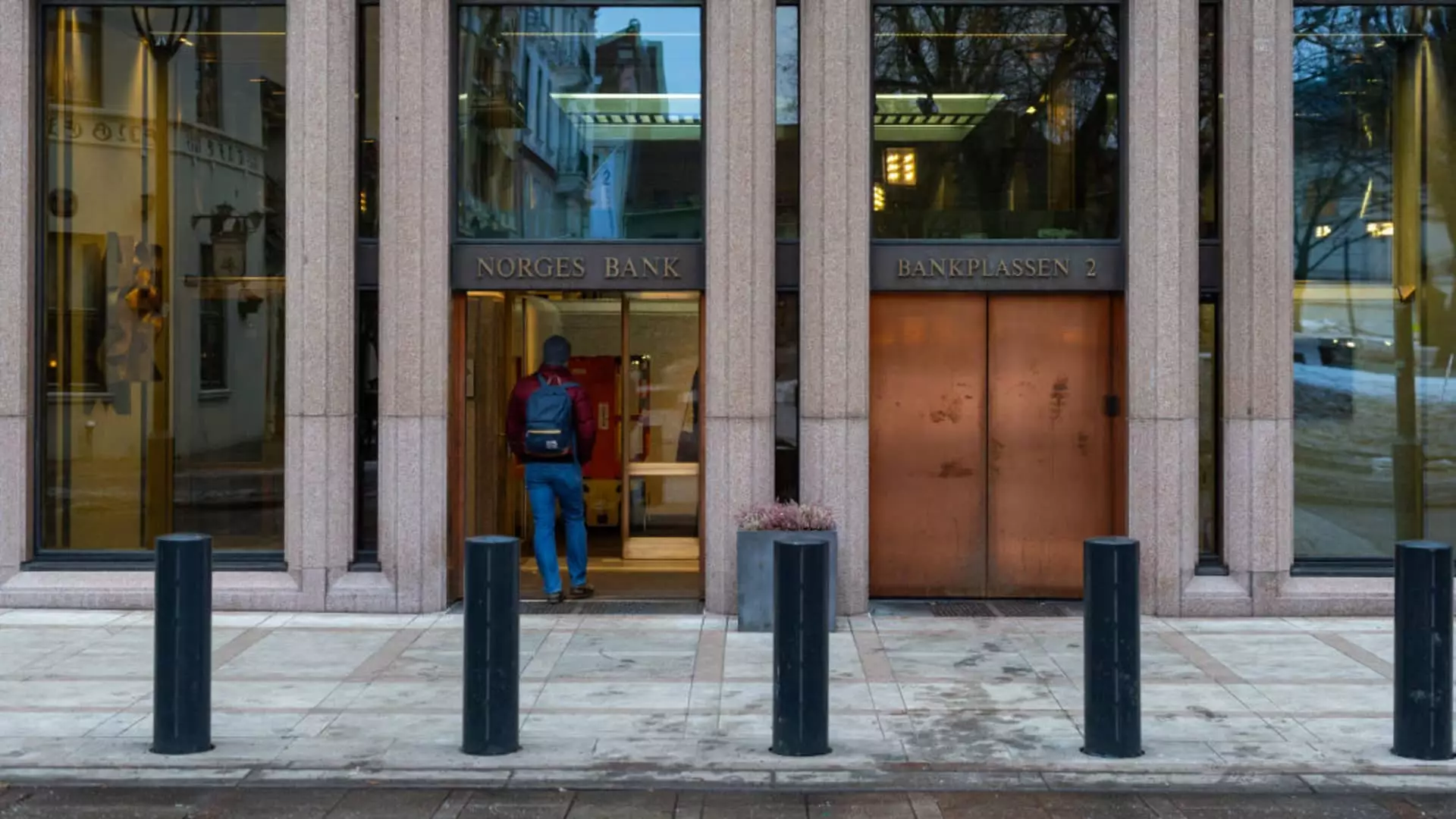Norway’s Government Pension Fund Global recently announced a substantial profit for the third quarter of 2023, registering an astounding 835 billion Norwegian kroner (approximately $76.3 billion). This impressive figure is indicative of a favorable stock market influenced by declining interest rates. By the end of September, the fund’s total assets amounted to an eye-popping 18.870 trillion kroner, solidifying its position as one of the world’s largest sovereign wealth funds.
Despite achieving a commendable overall return of 4.4% during the quarter, it slightly underperformed its benchmark index—set by Norway’s Finance Ministry—by 0.1 percentage points. The benchmark is derived from the FTSE Global All Cap index for equities, as well as Bloomberg Barclays indexes for fixed-income investments. This nuanced relationship between the fund’s performance and its benchmarks provides insight into the complexities of sovereign investment strategies in a volatile global market.
Market Influences and Monetary Policy Changes
Trond Grande, deputy CEO of Norges Bank Investment Management (NBIM) which oversees the fund, cited significant impacts from recent monetary policy shifts on the fund’s quarterly results. “It’s been quite an eventful quarter,” he stated, referring to the fluctuations observed throughout the preceding months of July and August. The anticipation surrounding the Federal Reserve’s potential interest rate cuts further complicated matters, injecting a significant amount of speculation and uncertainty into financial markets.
Grande’s assertion that “with a rising tide, all boats rise” reflects the broad-based upward movement in the stock market attributed to lower interest rates. This illustrates the interconnectedness of various financial instruments and underscores the importance of understanding macroeconomic factors when devising investment strategies.
In the third quarter, equities represented 71.4% of the fund’s assets and produced a return of 4.5%, while fixed-income investments, which made up 26.8% of the portfolio, achieved returns of 4.2%. The disparity between equity and bond performance highlights a notable trend; as interest rates decrease, riskier assets tend to gain favor among investors seeking higher returns.
However, risks remain palpable in the current financial landscape. Recently, NBIM highlighted heightened uncertainties exacerbated by a “completely different geopolitical situation.” Investors must navigate these complexities, which can serve as a double-edged sword, offering opportunities for growth yet also posing significant risks.
The Broader Economic Context
The global economic environment is shifting notably as major central banks have begun to ease their monetary policies. This trend is evidenced by the U.S. Federal Reserve’s recent half-percent interest rate cut, a first for the Bank of England since the onset of the COVID-19 pandemic, and repeated cuts by the European Central Bank. However, Japan presents an interesting anomaly, maintaining its interest rates in anticipation of a more calibrated approach to policy normalization.
As these easing measures unfold, the general trajectory of interest rates will likely influence investment decisions across the board. Consequently, the interplay between sovereign funds and central banking decisions must be closely monitored, as this could shape the investment landscape over the coming months.
When asked about the future of technology stocks, Grande expressed a measured perspective. Given the extraordinary hype surrounding AI and other technological advancements, he urged caution in approaching tech investments. The thriving conditions for tech stocks in recent years have raised market valuations to potentially unsustainable levels, making investors exercise prudence in evaluating future opportunities.
This prudent outlook resonates with the overarching theme of risk management in investment decisions. The inherent volatility of tech stocks, coupled with prevailing macroeconomic uncertainties, necessitates a thoughtful approach that weighs potential gains against possible losses.
Norway’s sovereign wealth fund continues to demonstrate remarkable resilience and adaptability amid changing global market conditions. As the influence of monetary policy weighs heavily on investment returns, stakeholders must remain vigilant and prepared to adjust strategies to navigate an increasingly complex financial environment. The fund’s performance in Q3 2023 serves as a testament to the importance of understanding market dynamics while underscoring the need for strategic foresight in navigating the coming months ahead.

